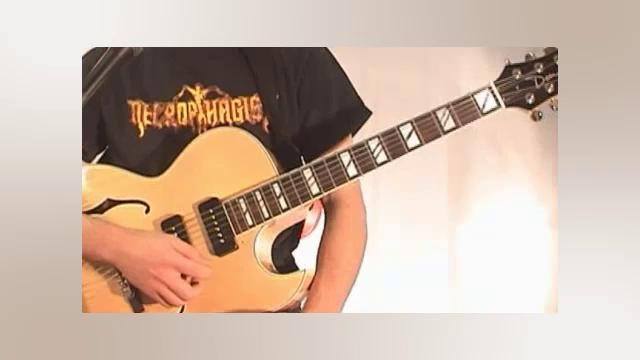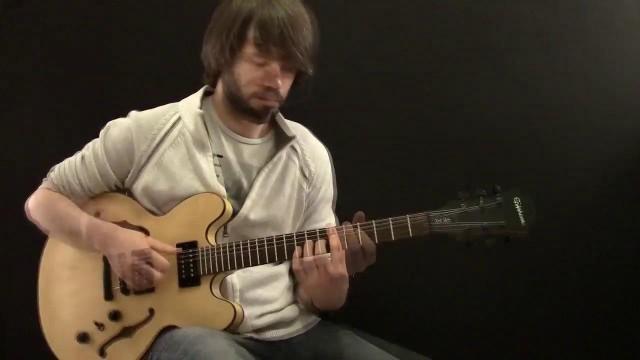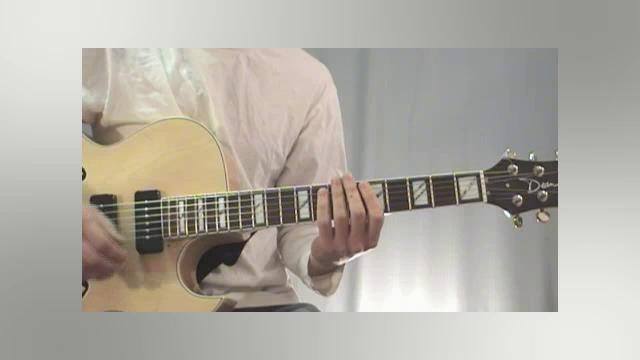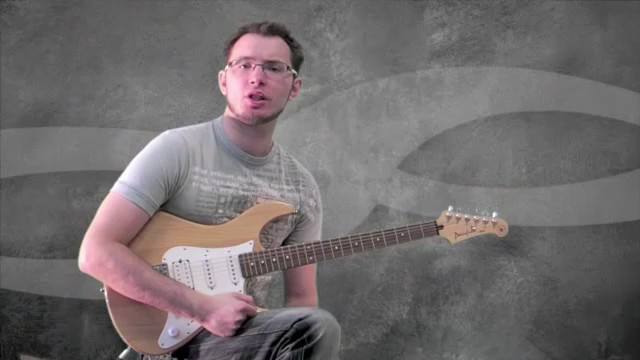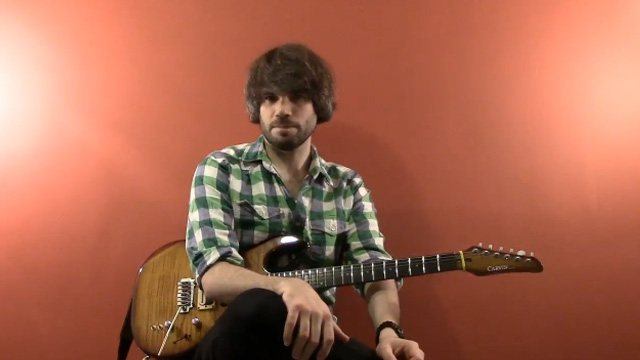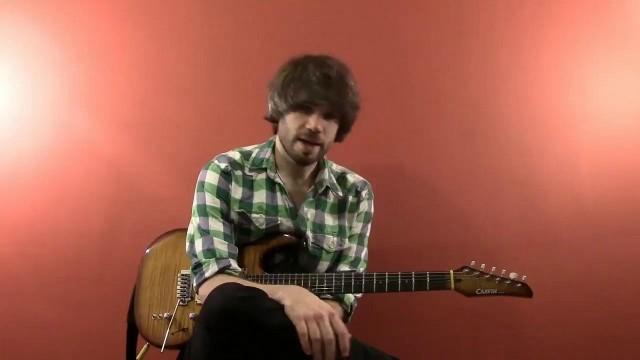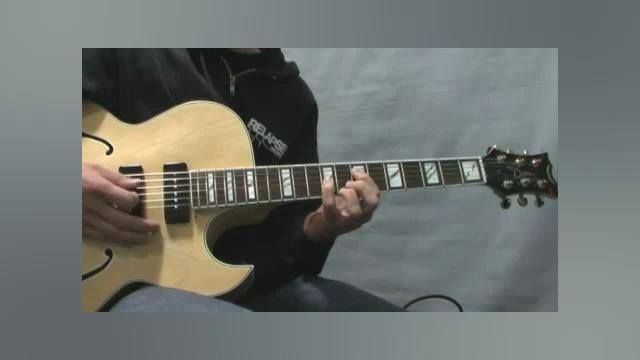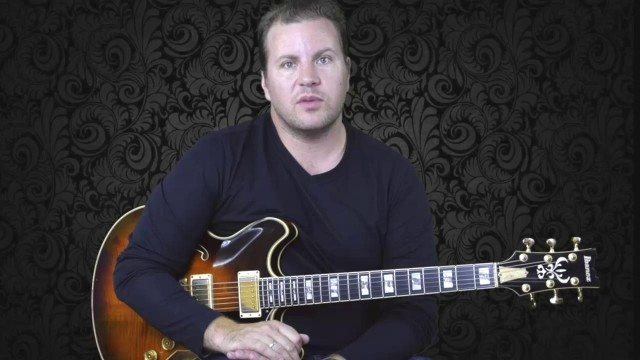Welcome to Part 1 of our tutorial on playing jazz standards.
A form is a name used to describe the structure of the song. Two common forms in Jazz Standards are the 'AABA' and 'AABC' form. The letters, A A B and A are references to movements within the piece.
Todays Song ' Autumn Leaves ' is structured in AABC form. If you refer to the second chart on your screen you will see a 32 bar form with chords and tab.
These chords can be divided into 4 sections, each containing 8 bars each. The first 8 bars, marked with a Red A. is referred to as the 'First A' or the 'A section'
The next 8 bars, a repetition of the same thing,is called the second A.
The next 8 bars, can either be called the B section or the Bridge, which then resolves to the C section. So to have another look. We start with an A section. Another A, then a B then a C. This is our AABC form.
If you look above the tab, I have supplied a real chord chart. This is the type of thing you would expect to see if you were playing with a live Jazz band. Note the brackets above the 6th and 9th bars. These are called Endings.
When reading a chart such as this one. These markings are indications as to what you should play next.
In this case, we would begin by playing through the chords and past ending 1, until we reach the Repeat sign. You will see this at the end of bar 8 as two vertical lines running up the stave with two dots in front of it.
This is telling us to return to the beginning of the song and start again. Since we have now played the first ending. We will play through to bar 5 then skip to bar 9, this the second ending. From here as there are no more repeat signs we will continue un-interrupted untill we reach the end of the chart. At this point we return to Bar one and start all over again. Autumn leaves will be featured throughout this tutorial and we will be looking at various options that can be used when accompanying a band and also some ideas you can use to approach this and other standards as a soloist.
At the end of this recording I will play the chords as written for 1 chorus. Followed by 2 more choruses for you to practice over. Feel free to play around with different rhythmic ideas, strumming and or percussive effects as you see fit.
Have fun, I'll join you in the next lesson.
4.jpg) |








































